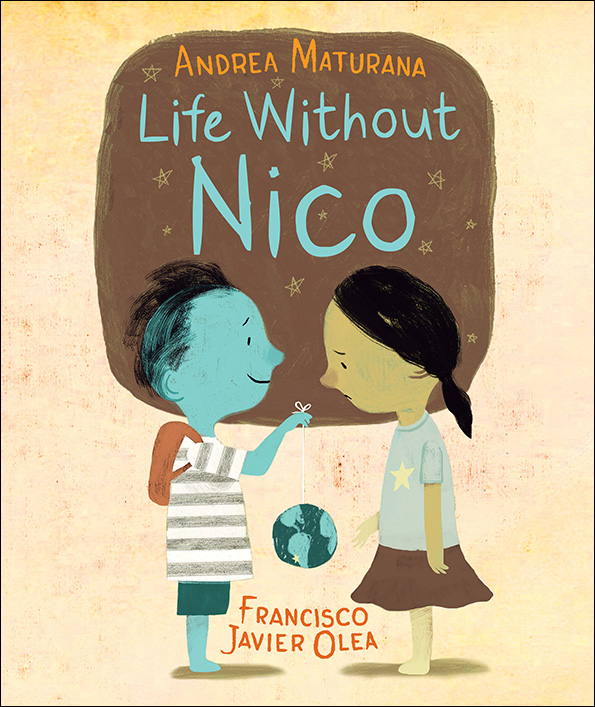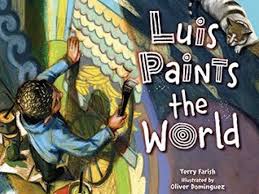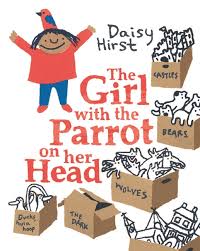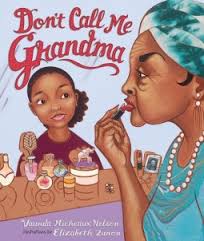Children and the Trauma of Separation
Seemi Azia and Angie Hoffman
Children facing the challenges of everyday life and the traumas of separation are not new themes in books for children and young adults. The field has observed strong contributions in picturebooks. For instance, dealing with the hard theme of eternal/long-term separation. Some international books such as Duck, Death and Tulip by Wolf Erlbruch (2011), Harry & Hopper by Margaret Wild and Freya Blackwood (2009), and Lola and the Rent-a-Cat by Ceseli Josephus Jitta (2007) carry the theme. Each one of these three books deals with perceptions of death. As a living and breathing entity in Duck, a beloved pet, Hopper is lost forever in death and Harry has to come to terms with this great loss, and in the depression of an old woman who loses her husband in Lola. She does not know how to contend with this trauma and finds solace in renting, from an online site, a cat.
Jacqueline Woodson went on to write influential books that were illustrated by E.B. Lewis and made their mark on the field of children’s literature as some of the most brilliantly executed works dealing sensitively with the larger issues of racism, segregation, and lost opportunities in reverse racism in The Other Side (2001) and Each Kindness in (2012).
Children need to see this theme reflected in picturebooks as it reflects real life emotional situations for them and makes them aware that they are not alone in this struggle if they come across such a situation in their own lives. Further, the U.S. has a constantly changing and altering citizenship as it adds more multicultural groups to create a very diverse environment. Recently, there have been picturebooks that deal with just such a theme of ‘separation’ in powerfully written and illustrated books that are based in cultures other than mainly Caucasians. Everyone . . . (2016) by author/Illustrated by Christopher Silas Neal focuses on emotions of children and may be a great book to add to this textset on the theme of separation.
Life Without Nico by Andrea Maturana, Illustrated by Francisco Javier Olea
Seemi:
In this sensitively written and simply illustrated book Maia and Nico are inseparable but Nico has to move to Australia for a period of time. Maia hates being without her friend but slowly and surely finds a kitten, a friend, and a piano to fill her heart. She keeps in touch with Nico by calling him and when he comes back she is unsure of how she will find time for him in her new and busy life. Her worries are for naught when as soon as Nico comes back into her life there is a place for him in her heart and distance has had no effect on their friendship.
I appreciated the simplicity of this book in its message through the written and illustrated text of moving on while being grounded in a friendship that transcends time and space. Both friends are ethnically dissimilar, which is represented through the colors of their skins. Their understanding and friendship is beyond mundane. Nico brings the colors of Australia to Maia through their continued interactions over the phone. Technology shrinks the world for them while bringing them together making it easier for them to stay in touch.
Angie:
This story is about friendship between Nico and Maia . . . how they played together before Nico had to leave for a while . . . Of course Maia was lonely, empty, bored . . . but she finds a friend, a cat, who give her comfort, makes a new friend, and discovers a new passion . . . And then she worries about would she be able to have two friends . . . and of course she did. The younger child has a different an adventurous life, full of making friends even though they leave for a while. This story shows Maia coping with the loss of Nico with a friend, a pet, a new friend, and a new passion while still leaving room in her life for Nico. The young child is developing physically, mentally and emotionally. Through it all life has a way of bringing connections to all kinds of friends, learning experience and learning to be who you are, an individual.
Luis Paints the World by Terry Farrish, Illustrated by Oliver Dominguez
Seemi:
Farrish and Dominguez do an incredible job in depicting the sense of loss of a young child, Luis, whose older brother Nico leaves to join the army. Luis finds an expression of his grief in painting the familiar places and actions of their lives in a mural. In Nico’s long-term absence Luis keeps adding to the mural and inevitably his work and passion draws the whole Dominican community to come out and add to the living and breathing artwork. Nico does witness it, finally, when he comes back and sees the dynamic colors that encompass the pictures he has sent from the places he has visited. It does become a reflection of the world that Nico lives in with his travels and his home.
The beautifully painted images express the grief of the younger sibling as he tries to fit into the duffel bag so that he can accompany Nico as Luis tries his best to either stop him from leaving or convince him to take him along. Nico says he wants to see the world and Luis initially wants his brother to stay so he paints what he considers Nico’s world in the mural later finds solace in painting the whole world for his brother. Luis’s Mural gives life to what he thinks is the world for his brother, which are the familiar objects that form their lives together
Their mothers cooked food Nico loves as their home and the river become an integral part of their story. As the words of their Mami join in, the strong family bond is clearly reflected in the story. Even though Nico loves being away it is his love for his family is what draws him back in to them and his Dominican community. There are usage of terms embedded in the written text that speaks to the cultural context and makes this book more authentic.
Angie:
“Luis Paints the World” is a realistic story of love between two brothers and how the longing for Nico by Lius is transformed into emotions expressed through by his art work on everything and anything he can draw on. The family a bond is strong and when someone leaves to pursue life opportunities it changes everything. But Lius teaches his mother how he copes with his brother leaving by drawing/painting . . . and then his mother starts painting along side him and finally the whole neighbors starts painting. Dealing with emotions can be difficult when ones does not know where to turn for help over the feelings of a missing a brother and his companionship. They learn, though, that the love the will always be there. The conclusion resulted when Nico came back home and saw Lius to come to him on his knees . . . it brought a tear to my eye. The story had a happy ending . . . I love stories with a happy endings, but a child teaching others how to create beautiful art to express the love he had for his brother who went away is powerful.
The Girl with the Parrot on Her Head by Daisy Hirst
Seemi:
In this simply written but expressive book Isabel has a friend Simon who leaves and never comes back. She reacts to being left behind by Simon and throws tantrums and then finds peace in systematically collecting things and adding them to boxes that she names. She later finds a really large box to fit the wolf she is scared of, but instead finds a boy Chester already in there. That starts a strong friendship between both Chester and Isabel that leads to pretend play and imagination.
Again the simplicity of the visual and written text are powerfully expressive in the message of moving on and finding and forming new friendships that fill in the empty spaces in the heart of the young. This is a common occurrence in today’s world where people move from one place to another in modern society and children are left to cope with the psychological effects of these moves. Kids who are left behind have another battle to fight.
Angie:
This story deals with a friend moving away and how Isabel deals with being alone without her friend. In spite of mixed feelings, she was full of anger and hated everything. Even her Parrot was not on her head anymore. And then she became quiet and realized she can be alone with out a friend. And then a new friend came into her life. Being a young person and dealing with the issue developing friends and having friends leave can very emotional, but time does heal emotions. Even in everyone’s life, we acquire friendships that last and some that stop, but in the end we learn to accept and move on.
Don’t Call me Grandma by Vaunda Micheaux Nelson, Illustrated by Elizabeth Zunon
Seemi:
This book by Nelson is a beautifully illustrated one with a strong reflection of multigenerational connections within families and the manner in which the old teach the younger members of the family through their actions (or lack thereof) and experiences. Great-grandmother Nell is ninety-six and different than most other grandmas, with a gruff mannerism that warns people to stay away and not to get too close. She is ‘prickly and ‘scary’ but one great granddaughter is persistent and goes back for more. Due to this persistence she learns patience and a lot more that draws her closer to her great-grandmother.
I appreciated the message of love and accessibility that this book portrays. Through the connection the G-Grandma also learns to slowly open up to her younger g-granddaughter to the point of letting her know of experiences growing up within a very different world that she lived in. She speaks of her broken heart and memories of a world that was not very accepting of African Americans due to the color of their skin. As the g-granddaughter learns to love and accept her g-grandmother and by the final goodbye she learns to appreciate her g-grandmother more and more. The historical connotations of more serious issues of segregation and racism are told in a very approachable manner for younger audiences.
Angie:
The first thing I thought of was myself, being a great-grandmother this year and grandmother . . . . But I would never say don’t call me Grandma. This book deals with the issue of living a full life which this Grandmother has done. In this story the granddaughter’s ability to make connection with her Grandmother is unique in everyway. I feel that the older generation did not show their emotion through saying “I Love You” or give “Hugs,” but we knew they loved us, just like the granddaughter felt about her grandmother. The relationship between different generations is a powerful, exciting, adventurous, learning experience that increases the love between Grandma and Granddaughter. The life cycle of a grandmother is coming to end . . . she 96 years old . . . It is a great story.




